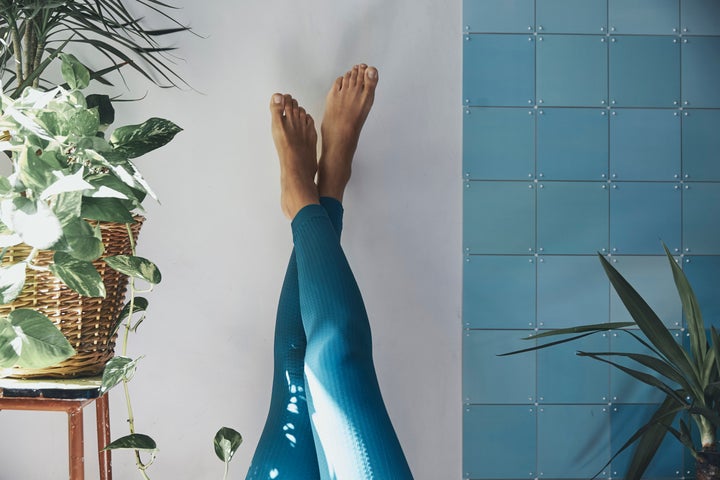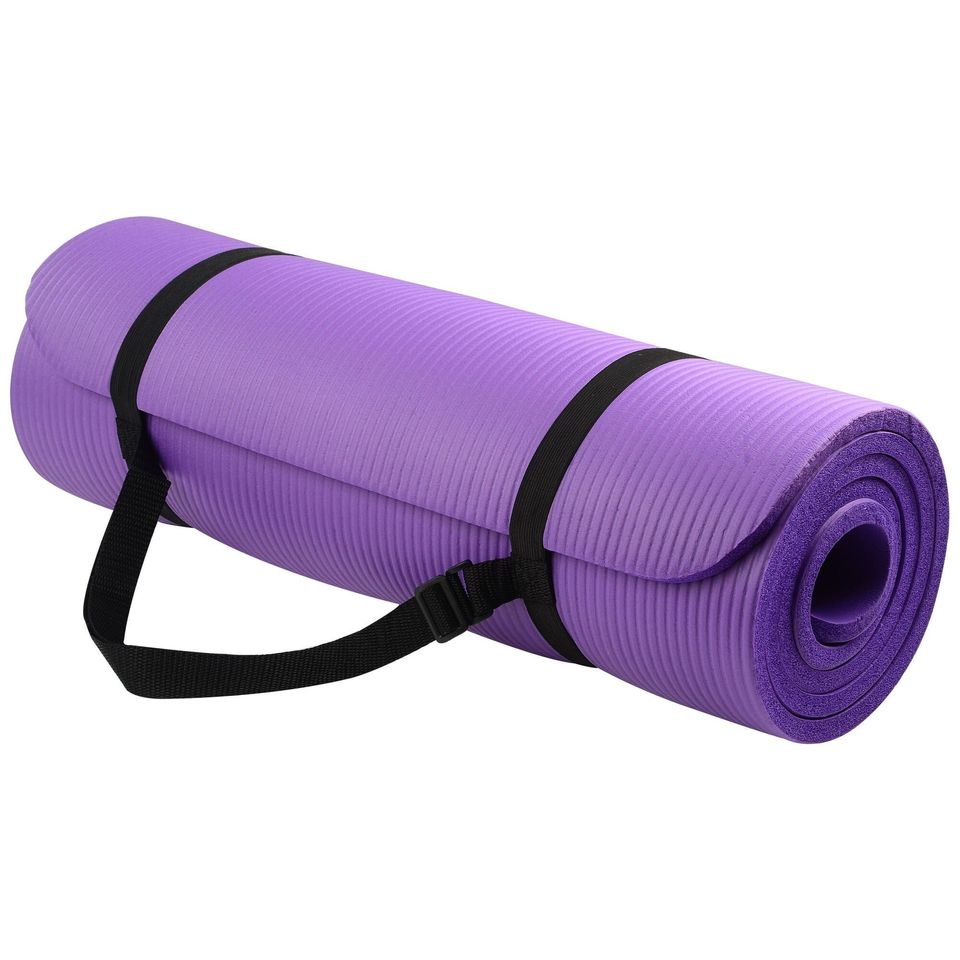
Across social media, fitness influencers and yogis alike tout the benefits of the legs-up-the-wall yoga pose — a simple move with an explanatory name.
While social media can be an unreliable place for fitness advice, experts say there is truth behind the trend. This pose is beneficial for most people — though there are some important exceptions.
Below, experts share the benefits of this new trend, the best time of day to do it and who should avoid this movement.
First, what is it?
“The legs-up-on-the-wall is a modification from a classical position, which would have been more like a shoulder stand,” explained Lori Rubenstein Fazzio, clinical professor of yoga and health at Loyola Marymount University in Los Angeles, California. “So, this is a modification of that — it’s not in classical yoga texts as a posture.”
While there are a few adaptations, the modern way of doing it is exactly how it sounds — by putting your legs up on the wall.
“For highly functional individuals, meaning relatively healthy, the usual way of getting into the pose ... is to really get your bum as close to the wall as you can and kind of gently swing your legs up, so they’re propped against the wall, and you’re going to lay yourself down on the floor slowly and then just stay there and settle,” said Dezza Pastor, a yoga and meditation instructor with the UPMC Center for Integrative Medicine in Pittsburgh, Pennsylvania.
While this is the traditional way, both experts said modifications are necessary for many people, including those with tight hamstrings (who won’t want to push their butt all the way against the wall; try leaving some space between your bum and the wall if you fall in this category). In addition, those with back problems may need extra support in the form of a rolled-up blanket at your lumbar curve, Pastor noted.
And if you notice a sharp pain or numbness when doing it, that’s a sign that you should try a modification or consider another kind of pose, Fazzio said.
Putting your legs up on the wall is beneficial for circulation.
“The legs-up-the-wall is a passive way of getting the body into an inversion,” Pastor said. “Meaning having your feet, your legs above your heart,” Pastor added that any time you’re in an inversion, you’re helping your body increase circulation.
Additionally, it’s an antidote to the upright sitting or standing that most folks do throughout the day.
“If you’ve been upright all day, it counters that and helps facilitate the blood in the legs back to the heart and helps with lymph drainage,” Fazzio noted. For reference, lymph is a fluid that consists of white blood cells and that acts as a filter system in our body, according to Fazzio.
Fazzio added that many people who have certain cancer surgeries that include lymph gland removal wear compression socks and do inversions like this one regularly because they’re prone to lymphedema, which is swelling caused by excess lymph.
The pose can also help with leg care as well. After a day of standing or sitting, fluids pool in your legs, Fazzio said, which can result in swelling. It can combat that by helping your heart with circulation.

It’s also a good posterior chain stretch.
“There’s also the physical benefit of actually stretching out the back line of the body,” Pastor said.
This starts with the soles of the feet and goes up to the calves, the hamstrings, the glutes, the back and the neck.
When seated for an extended period, “some of these areas can get stuck and tight. This is a great way to gently, and I emphasize gently, stretch the backside of the body,” Pastor noted.
It’s relaxing.
“I would say just by the very passiveness and support you can get from the ground and the wall in doing this pose, there’s an element of calming the body down,” Pastor explained.
When you hold the position for a few minutes — or longer — you’re allowing your body to sit in stillness. (Pastor added that holding it for three to five minutes is a great place to start.)
“You begin to slow your breath down, and by slowing your breath down, you’re actually trying to invoke that parasympathetic nervous system to take over,” Pastor said.
When you routinely practice it, you train your body to settle and find that sense of calm. And who doesn’t want some peace added to their day?
What is the best time to do it?
As mentioned above, this is a great pose to combat the effects of the upright position most people are in all day. So, the best time to do it is at the end of the day before bed, according to Fazzio.
Plus, since it can induce a relaxation response, it can be doubly beneficial to do before you drift off to sleep, she said.
“It will calm the mind, the body and helps facilitate that draining of the fluids. It’s a nice thing to do at the end of the day before bed,” Fazzio noted.
That said, it can be a dangerous position for some people.
According to Fazzio, a number of contraindications don’t get enough attention when it comes to this pose — and that is a potentially dangerous problem.
People with certain heart conditions, including congestive heart failure and high blood pressure, should get approval from their doctor before trying it. It can be too much for an unhealthy heart, she said.
Additionally, people with some lower back issues or a herniated disc should avoid this move, Fazzio said. “It is helpful for some back conditions, and problematic for others,” she added.
Pastor said that those with glaucoma might also want to skip it because it could add pressure to the head and eyes. And folks who recently went through surgery — like heart or brain surgery — need to wait for their doctor’s approval first.
“If you don’t have your doctor’s clearance, maybe this is a pose you step aside for a moment until you totally heal up,” Pastor added.
It’s good and accessible if you’re healthy.
When asked about the popularity of legs-up-the-wall, Pastor said, “it’s good that it’s trending.”
It’s accessible, modifiable and can be done by yogis as well as those unfamiliar with yoga.
“They can definitely just do the pose,” Pastor said, “and reap the benefits of it.”
